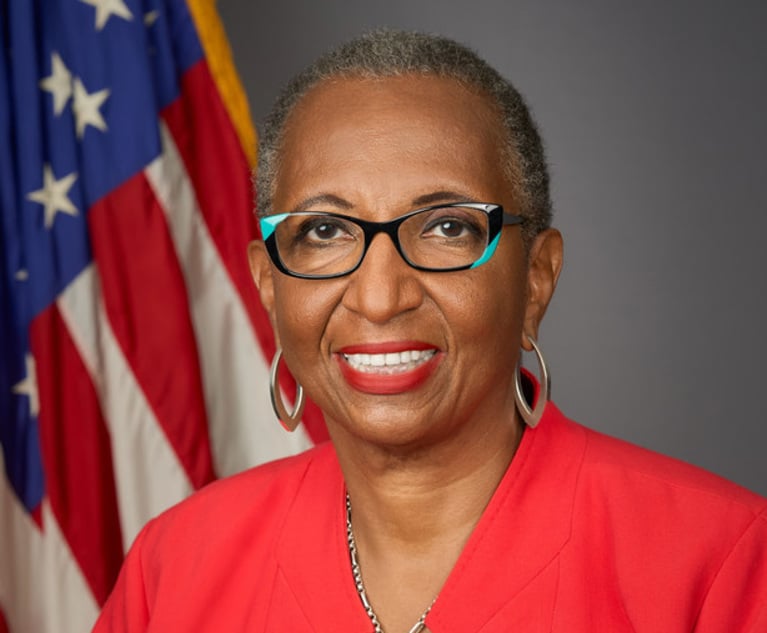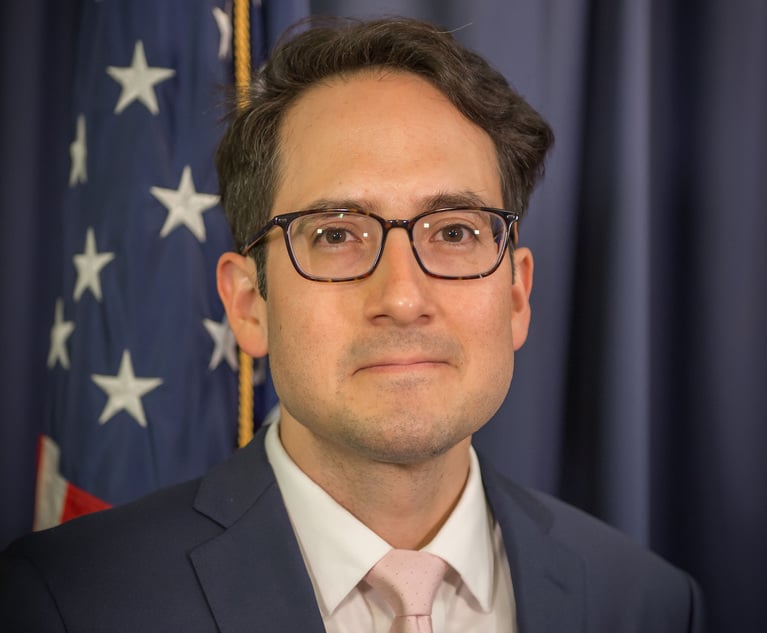Regulatory: Considering energy regulations—Oil
3 aspects of federal oil regulation may change the shape of the countrys energy sector, and its economy, for decades to come
January 18, 2012 at 06:47 AM
7 minute read
The original version of this story was published on Law.com
Federal regulation of oil as an energy source currently has three principal aspects: regulation of drilling, especially off-shore drilling on the Outer Continental Shelf (OCS); review of a proposed pipeline to bring oil from Canadian tar sands to U.S. refineries; and regulation of consumption of motor vehicles to limit tailpipe emissions of greenhouse gases. The policies emerging from these stovepipes are only loosely coordinated. The outcomes depend upon the unique politics of each policy area, which factor in the public's strong aversion to high gasoline prices.
Offshore drilling. New technologies and techniques developed since the late 1990s have greatly increased the ability to recover oil from deep waters (greater than 600 feet). Today, 30 percent of domestic U.S. oil production occurs in the Gulf of Mexico, and off-shore drilling enjoys popular support in all Gulf states except Florida. However, 85 percent of the OCS (especially off the East Coast and California) is closed to drilling.
To lower pump prices and enhance national energy security, in March 2010, the Obama Administration proposed to permit drilling off Virginia and the eastern Gulf near Florida. Three weeks later, the Deepwater Horizon rig exploded. The administration publicly imposed a moratorium on further offshore drilling and withdrew its proposal.
Litigation losses ultimately forced the administration to withdraw the moratorium and replace it with regulations imposing greater health and safety requirements on individual wells, and requiring the drilling industry to deploy a response and remediation capacity commensurate with the scope of the risks. However, the administration has adopted a de facto “go slow” policy, and is granting just enough drilling permits to avoid further litigation. New production from the Gulf will be slow in coming.
Tar sands pipelines. Canada ranks second worldwide in proven oil reserves, thanks to its abundant oil sands. Advances in technology have made it possible to extract petroleum from these sands by burning natural gas to create steam that is pumped into underground formations.
The president is considering a petition to construct the Keystone pipeline to transport Canadian oil to U.S. refineries. The project would use well-understood technology to deliver oil that would enhance the diversity and security of the country's oil supply. The petition has engendered substantial opposition, however, because the carbon dioxide released through this production method is materially greater than emissions from normal extraction techniques.
The president faces a stark choice between new policies that focus on reducing greenhouse gas emissions and the policy considerations (effects on prices, energy security, reducing country risk) that traditionally have dominated oil supply decisions.
Fuel economy standards. The greatest use of oil in the American economy is in vehicle fuels. While the U.S. has reduced tailpipe emissions of traditional pollutants by 99 percent since 1975, the transportation sector still emits large quantities of carbon dioxide. Rather than seek authority for a direct tax on fuels to encourage pollution reductions, the Department of Transportation and the Environmental Protection Agency have issued regulations that require manufacturers to reduce tailpipe emissions of CO2, and double the average mileage of new cars. The rules will force automobile companies to develop new technologies to meet these requirements. Proponents hope that the rules will facilitate a transition to vehicles powered by alternative technologies other than oil.
This concerted effort to force a change in the fuels used to power the U.S. vehicle fleet is one of the greatest engineering and behavioral experiments ever required by a federal regulation. Its outcome will change the shape of the country's energy sector, and its economy, for decades to come.
Federal regulation of oil as an energy source currently has three principal aspects: regulation of drilling, especially off-shore drilling on the Outer Continental Shelf (OCS); review of a proposed pipeline to bring oil from Canadian tar sands to U.S. refineries; and regulation of consumption of motor vehicles to limit tailpipe emissions of greenhouse gases. The policies emerging from these stovepipes are only loosely coordinated. The outcomes depend upon the unique politics of each policy area, which factor in the public's strong aversion to high gasoline prices.
Offshore drilling. New technologies and techniques developed since the late 1990s have greatly increased the ability to recover oil from deep waters (greater than 600 feet). Today, 30 percent of domestic U.S. oil production occurs in the Gulf of Mexico, and off-shore drilling enjoys popular support in all Gulf states except Florida. However, 85 percent of the OCS (especially off the East Coast and California) is closed to drilling.
To lower pump prices and enhance national energy security, in March 2010, the Obama Administration proposed to permit drilling off
Litigation losses ultimately forced the administration to withdraw the moratorium and replace it with regulations imposing greater health and safety requirements on individual wells, and requiring the drilling industry to deploy a response and remediation capacity commensurate with the scope of the risks. However, the administration has adopted a de facto “go slow” policy, and is granting just enough drilling permits to avoid further litigation. New production from the Gulf will be slow in coming.
Tar sands pipelines. Canada ranks second worldwide in proven oil reserves, thanks to its abundant oil sands. Advances in technology have made it possible to extract petroleum from these sands by burning natural gas to create steam that is pumped into underground formations.
The president is considering a petition to construct the Keystone pipeline to transport Canadian oil to U.S. refineries. The project would use well-understood technology to deliver oil that would enhance the diversity and security of the country's oil supply. The petition has engendered substantial opposition, however, because the carbon dioxide released through this production method is materially greater than emissions from normal extraction techniques.
The president faces a stark choice between new policies that focus on reducing greenhouse gas emissions and the policy considerations (effects on prices, energy security, reducing country risk) that traditionally have dominated oil supply decisions.
Fuel economy standards. The greatest use of oil in the American economy is in vehicle fuels. While the U.S. has reduced tailpipe emissions of traditional pollutants by 99 percent since 1975, the transportation sector still emits large quantities of carbon dioxide. Rather than seek authority for a direct tax on fuels to encourage pollution reductions, the Department of Transportation and the Environmental Protection Agency have issued regulations that require manufacturers to reduce tailpipe emissions of CO2, and double the average mileage of new cars. The rules will force automobile companies to develop new technologies to meet these requirements. Proponents hope that the rules will facilitate a transition to vehicles powered by alternative technologies other than oil.
This concerted effort to force a change in the fuels used to power the U.S. vehicle fleet is one of the greatest engineering and behavioral experiments ever required by a federal regulation. Its outcome will change the shape of the country's energy sector, and its economy, for decades to come.
This content has been archived. It is available through our partners, LexisNexis® and Bloomberg Law.
To view this content, please continue to their sites.
Not a Lexis Subscriber?
Subscribe Now
Not a Bloomberg Law Subscriber?
Subscribe Now
NOT FOR REPRINT
© 2025 ALM Global, LLC, All Rights Reserved. Request academic re-use from www.copyright.com. All other uses, submit a request to [email protected]. For more information visit Asset & Logo Licensing.
You Might Like
View All
Fired NLRB Member Seeks Reinstatement, Challenges President's Removal Power

GOP-Led SEC Tightens Control Over Enforcement Investigations, Lawyers Say

GOP Now Holds FTC Gavel, but Dems Signal They'll Be a Rowdy Minority
6 minute read
Trump's Inspectors General Purge Could Make Policy Changes Easier, Observers Say
Trending Stories
Who Got The Work
J. Brugh Lower of Gibbons has entered an appearance for industrial equipment supplier Devco Corporation in a pending trademark infringement lawsuit. The suit, accusing the defendant of selling knock-off Graco products, was filed Dec. 18 in New Jersey District Court by Rivkin Radler on behalf of Graco Inc. and Graco Minnesota. The case, assigned to U.S. District Judge Zahid N. Quraishi, is 3:24-cv-11294, Graco Inc. et al v. Devco Corporation.
Who Got The Work
Rebecca Maller-Stein and Kent A. Yalowitz of Arnold & Porter Kaye Scholer have entered their appearances for Hanaco Venture Capital and its executives, Lior Prosor and David Frankel, in a pending securities lawsuit. The action, filed on Dec. 24 in New York Southern District Court by Zell, Aron & Co. on behalf of Goldeneye Advisors, accuses the defendants of negligently and fraudulently managing the plaintiff's $1 million investment. The case, assigned to U.S. District Judge Vernon S. Broderick, is 1:24-cv-09918, Goldeneye Advisors, LLC v. Hanaco Venture Capital, Ltd. et al.
Who Got The Work
Attorneys from A&O Shearman has stepped in as defense counsel for Toronto-Dominion Bank and other defendants in a pending securities class action. The suit, filed Dec. 11 in New York Southern District Court by Bleichmar Fonti & Auld, accuses the defendants of concealing the bank's 'pervasive' deficiencies in regards to its compliance with the Bank Secrecy Act and the quality of its anti-money laundering controls. The case, assigned to U.S. District Judge Arun Subramanian, is 1:24-cv-09445, Gonzalez v. The Toronto-Dominion Bank et al.
Who Got The Work
Crown Castle International, a Pennsylvania company providing shared communications infrastructure, has turned to Luke D. Wolf of Gordon Rees Scully Mansukhani to fend off a pending breach-of-contract lawsuit. The court action, filed Nov. 25 in Michigan Eastern District Court by Hooper Hathaway PC on behalf of The Town Residences LLC, accuses Crown Castle of failing to transfer approximately $30,000 in utility payments from T-Mobile in breach of a roof-top lease and assignment agreement. The case, assigned to U.S. District Judge Susan K. Declercq, is 2:24-cv-13131, The Town Residences LLC v. T-Mobile US, Inc. et al.
Who Got The Work
Wilfred P. Coronato and Daniel M. Schwartz of McCarter & English have stepped in as defense counsel to Electrolux Home Products Inc. in a pending product liability lawsuit. The court action, filed Nov. 26 in New York Eastern District Court by Poulos Lopiccolo PC and Nagel Rice LLP on behalf of David Stern, alleges that the defendant's refrigerators’ drawers and shelving repeatedly break and fall apart within months after purchase. The case, assigned to U.S. District Judge Joan M. Azrack, is 2:24-cv-08204, Stern v. Electrolux Home Products, Inc.
Featured Firms
Law Offices of Gary Martin Hays & Associates, P.C.
(470) 294-1674
Law Offices of Mark E. Salomone
(857) 444-6468
Smith & Hassler
(713) 739-1250






